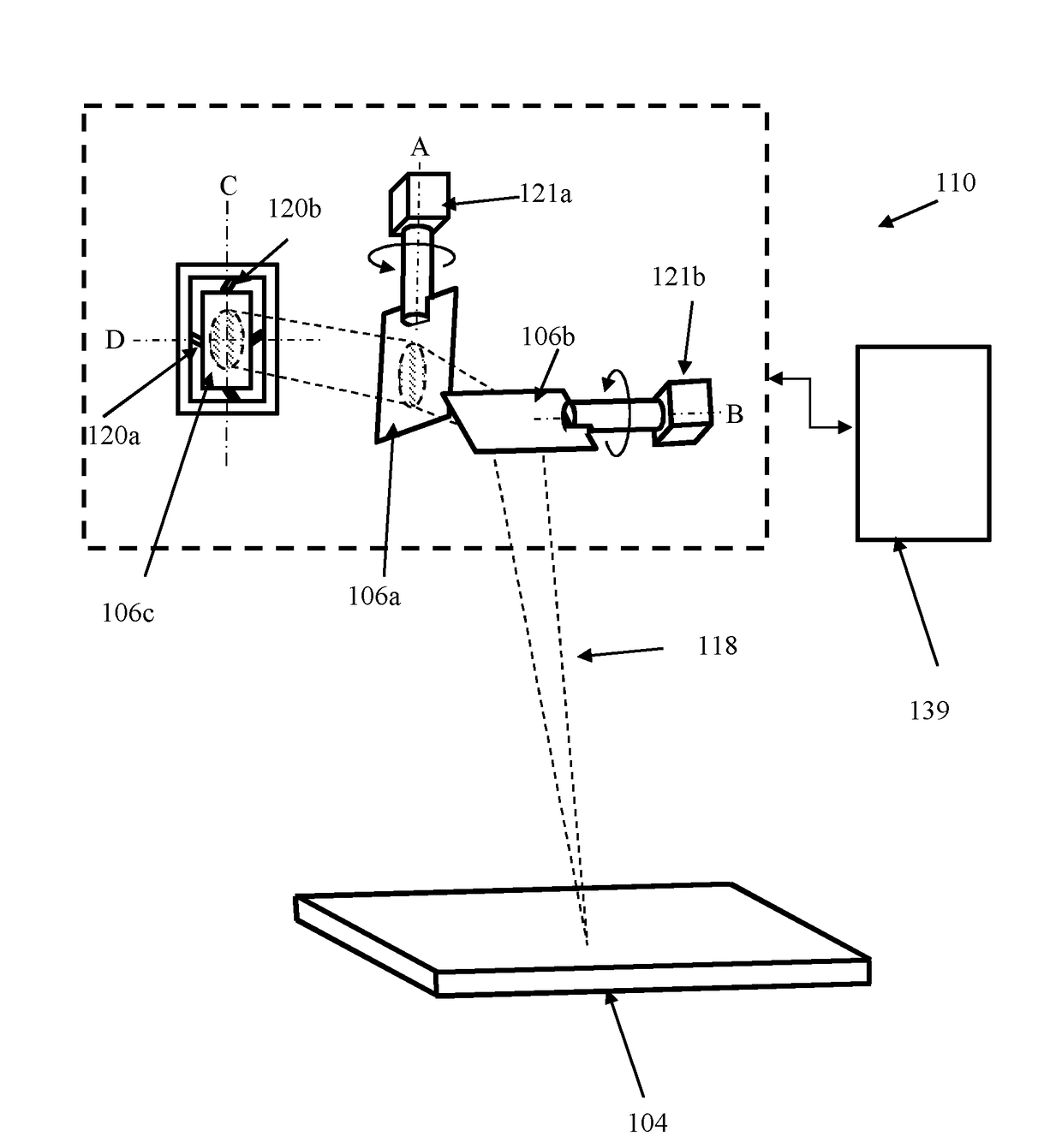Additive manufacturing apparatus and methods
a technology of additive manufacturing and energy beam, which is applied in the direction of additive manufacturing processes, manufacturing tools, instruments, etc., can solve the problems of significant divergence of laser beam from desired patterns, warping and/or curling of parts being built, and difficult drag of melt pool across the layer in a continuous mode of laser operation, so as to achieve fast dynamic response, fast magnetic field change, and fast dynamic response
- Summary
- Abstract
- Description
- Claims
- Application Information
AI Technical Summary
Benefits of technology
Problems solved by technology
Method used
Image
Examples
Embodiment Construction
[0045]Referring to FIGS. 1 and 2, a laser solidification apparatus according to an embodiment of the invention comprises a main chamber 101 having therein partitions 115, 116 that define a build chamber 117 and a surface onto which powder can be deposited. A build platform 102 is provided for supporting an object 103 built by selective laser melting powder 104. The platform 102 can be lowered within the build chamber 117 as successive layers of the object 103 are formed. A build volume available is defined by the extent to which the build platform 102 can be lowered into the build chamber 117.
[0046]Layers of powder 104 are formed as the object 103 is built by dispensing apparatus 108 and an elongate wiper 109. For example, the dispensing apparatus 108 may be apparatus as described in WO2010 / 007396.
[0047]A laser module 105 generates a 500 W laser for melting the powder 104, the laser directed as required by a scanner, in this embodiment an optical module 110, under the control of a c...
PUM
| Property | Measurement | Unit |
|---|---|---|
| angles | aaaaa | aaaaa |
| angles | aaaaa | aaaaa |
| stress | aaaaa | aaaaa |
Abstract
Description
Claims
Application Information
 Login to View More
Login to View More - R&D
- Intellectual Property
- Life Sciences
- Materials
- Tech Scout
- Unparalleled Data Quality
- Higher Quality Content
- 60% Fewer Hallucinations
Browse by: Latest US Patents, China's latest patents, Technical Efficacy Thesaurus, Application Domain, Technology Topic, Popular Technical Reports.
© 2025 PatSnap. All rights reserved.Legal|Privacy policy|Modern Slavery Act Transparency Statement|Sitemap|About US| Contact US: help@patsnap.com



